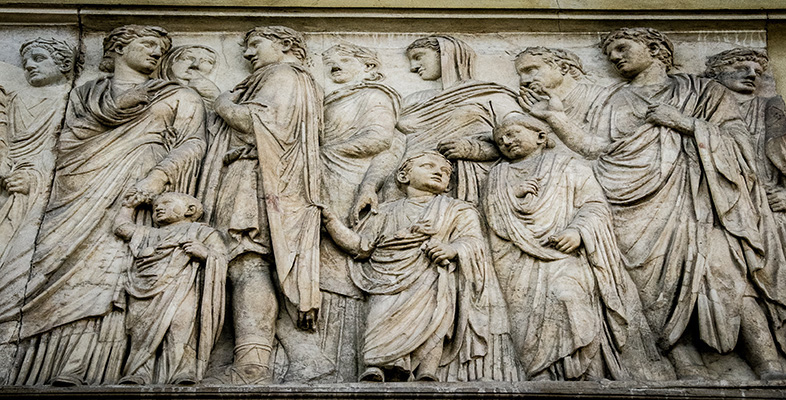Archaeological evidence
This feels in some ways like the most ‘real’ source – where you can almost touch the Classical world, and where you get a sense of what the Classical world looked like. Classical archaeology covers a wide range of areas: not just buildings like the Parthenon or the temples at Paestum, but also cities, landscapes, graves, coins, battlefields, everyday items, plant and animal remains, ancient rubbish and much else. Archaeology often throws up evidence where literature doesn't. People, after all, use things and change the way the world looks, even when they don't commit themselves to writing. In fact, for certain periods, such as very early Greece in which there was little or no writing, archaeological evidence is the only contemporary evidence. Similarly, many aspects of everyday life, on which literature is not very vocal, can be explored much further through archaeological evidence.
Perhaps the thing to watch out for most carefully with archaeological evidence is a tendency to assume that the very ‘realness’ of things surviving from the past gives one immediate access to what that past was like. Archaeological evidence needs to be interpreted just as much as literature, and interpretation is required at a number of levels. Many human actions or events create a physical change in the world: the building of a stone temple is a deliberate creation of a lasting monument for religious and social purposes, whereas the loss of a coin is a casual accident followed by an unsuccessful search for the coin. These different events both changed the world in a way that an archaeologist can detect, but each had a different significance and effect in the past that require interpretation. Furthermore, every single thing that survives from the past has undergone a series of physical and circumstantial transformations in order to survive into the present.
The Parthenon, for example, is no longer in pristine condition. The stone has weathered and its painted decoration is lost; it has been transformed into a church and later an arsenal which exploded; sculptures have been removed and parts have been rebuilt and replaced, to make the building safe and more presentable as a monument to Greek achievement; and doubtless it has suffered several earthquakes along the way! The Parthenon may be a spectacular example, but everything is transformed by time: organic materials decay, buildings are demolished, and tombs robbed. All such transformations need to be assessed and appreciated by archaeologists, and that's before even asking what it all means. The final act of interpretation – attempting to communicate an understanding of the significance and meaning of the evidence – can also be a matter for debate.
Here is an example, drawn from burials, one of the major sources of archaeological evidence for the Classical world. In Attica, the area around Athens, the number of graves decreased significantly in the course of the Archaic period. Many archaeologists assume that this reflects a corresponding decrease in the Athenian population, and have speculated about reasons (the Greek population at large seems to have increased by contrast). They may well be right, but another group of archaeologists have a different explanation for the burial pattern: they say that society became more stratified, increasingly burying only the elite, so that evidence of these burials is the only thing which survives. Not a population decrease then, but a more prominent class system. The debate still continues and probably shows two things: first, the great potential of archaeological evidence, allowing conclusions about social aspects such as class; but also, secondly, the need for interpretation. Not even archaeology gives immediate access to the Classical world.
